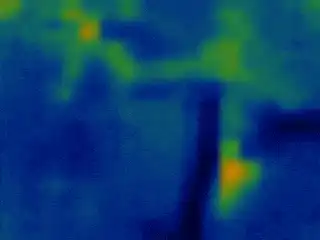When I say "anomaly detection" you may imagine an overly complicated process, something exclusive to deep learning algorithms and indecipherable coding. In reality, the concept of uncovering anomalous behavior in a system is really just the act of identifying an unclassified or uncertain state.
In this Hackster project, I created a basic anomaly detection ML model with Edge Impulse that processes thermal images to detect unknown states of thermal readings and relays collected data to the cloud with the Blues Wireless Notecard.
By using the "edge ML" capabilities provided by Edge Impulse, the cellular Notecard device-to-cloud data pump from Blues Wireless, a Raspberry Pi Zero 2 W, and an Ubidots dashboard, I was able to create a simple, low-power, thermal monitoring station with only a small bit of Python coding required 🐍.
Animation of all the recorded thermal images.
Be sure to view the full tutorial on Hackster to see how this project was built from scratch!




Top comments (0)